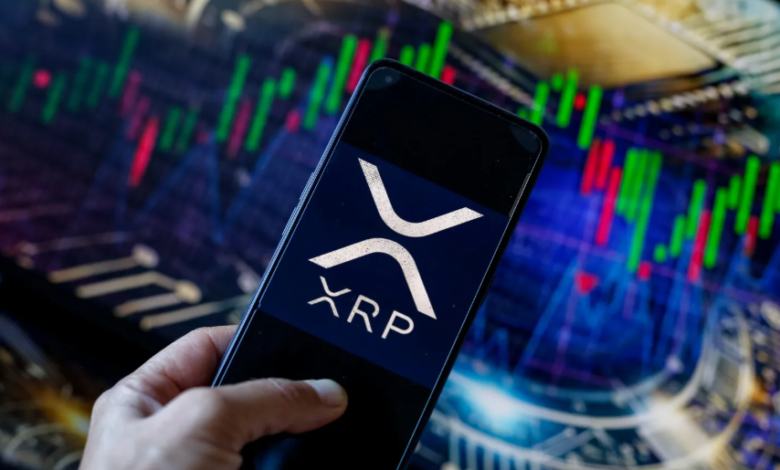What Impact Does XRP Price Have on Ripple’s Future?

Ripple is a name that frequently surfaces in discussions about cryptocurrency, particularly due to its innovative approach to facilitating cross-border payments. As one of the leading blockchain technologies in the financial sector, Ripple’s utility is largely tied to the performance of its native token, XRP. But how does XRP Price influence Ripple’s future? This article delves into the multifaceted relationship between XRP price movements and Ripple’s long-term success, exploring the factors at play and the implications for investors, stakeholders, and the broader crypto ecosystem.
The Role of XRP in Ripple’s Ecosystem
Ripple was designed to provide faster and cheaper financial transactions compared to traditional banking methods. It uses a distributed ledger technology (DLT) known as the XRP Ledger (XRPL) to enable secure, real-time international money transfers. XRP, as the native token, plays a central role in these transactions, often acting as a bridge currency between different fiat currencies.
The price of XRP directly impacts Ripple’s ability to maintain its relevance in the financial industry. A higher XRP price typically suggests greater demand for the currency, which in turn indicates the success and stability of Ripple’s network. Conversely, a drop in XRP’s price can signal reduced demand or diminished trust in the platform, potentially limiting Ripple’s growth opportunities.
The Impact of XRP Price on Ripple’s Adoption
The price of XRP has a profound influence on Ripple’s adoption by financial institutions and payment providers. Ripple’s business model heavily depends on the integration of its network into banks and payment services. These institutions are more likely to adopt Ripple’s solutions when they perceive a strong and stable value proposition, which is often linked to XRP’s price performance.
When XRP price is high, it increases confidence among Ripple’s partners, as the token’s value becomes more tangible and reliable. For instance, in periods of price appreciation, more financial players may be incentivized to use XRP for liquidity purposes. On the other hand, if XRP’s price falls, it can create uncertainty, potentially leading to a hesitation in adopting Ripple’s services.
Investor Sentiment and XRP Price Volatility
Investor sentiment is another critical factor influenced by XRP price fluctuations. The cryptocurrency market is known for its volatility, and XRP is no exception. XRP price movements often trigger significant shifts in investor sentiment, affecting not only Ripple’s market valuation but also its ability to secure additional investment or maintain market confidence.
A consistently rising XRP price can foster positive sentiment, attracting institutional investors and speculators alike. It may signal Ripple’s growing dominance in the cross-border payment space, which boosts investor confidence in Ripple’s long-term success. Conversely, a significant decline in XRP price can result in panic selling and loss of investor confidence, impacting Ripple’s ability to raise capital and execute long-term plans.
Regulatory Implications of XRP Price Movements
Regulatory scrutiny has been one of the most significant challenges facing Ripple. The United States Securities and Exchange Commission (SEC) has accused Ripple of conducting an unregistered securities offering through its sales of XRP. The outcome of this lawsuit will not only impact Ripple’s operations but also influence XRP’s price trajectory.
If Ripple is forced to pay fines or restructure its operations due to regulatory intervention, XRP’s price could take a hit, at least in the short term. A prolonged legal battle or unfavorable regulatory outcome could lead to decreased market confidence, further affecting Ripple’s ability to scale its business internationally.
On the other hand, a positive outcome for Ripple in its regulatory disputes could stabilize XRP price and offer a more optimistic outlook for the platform’s expansion, especially as new regulations are established for cryptocurrencies worldwide.
Ripple’s Strategic Partnerships and XRP Price Correlation
Ripple has established numerous strategic partnerships with financial institutions, including Santander, PNC, and SBI Holdings. These alliances are crucial for Ripple’s business model, as they help integrate Ripple’s technology into global payment networks.
XRP price plays a key role in how these partnerships evolve. When XRP experiences price growth, it adds credibility to Ripple’s technology and signals to its partners that it is a viable and secure platform for cross-border transactions. This could lead to expanded partnerships, enhanced liquidity, and a broader user base for Ripple’s services.
However, if XRP price declines sharply, Ripple’s strategic partners may be more hesitant to invest further resources into the network. For example, if the price fall is due to concerns over liquidity or regulatory hurdles, potential partners may rethink their engagement with Ripple, slowing the pace of adoption.
The Future Outlook: XRP Price and Ripple’s Evolution
Ripple’s future is closely tied to the performance of XRP, but it is also dependent on how the company navigates the ever-changing landscape of blockchain technology, financial regulation, and global economic trends. While XRP price fluctuations will continue to play a significant role in Ripple’s success, other factors, such as scalability, interoperability, and the development of new use cases for Ripple’s network, will also influence its long-term prospects.
The future of Ripple hinges on maintaining a delicate balance between fostering trust in XRP and expanding its platform’s utility. Ripple’s ability to innovate and overcome regulatory challenges will be key to positioning itself as a leader in the digital payments space, regardless of short-term price volatility.
Conclusion
In conclusion, XRP price is undeniably an essential factor influencing Ripple’s future. From driving adoption by financial institutions to shaping investor sentiment, the price of XRP carries substantial weight in determining the platform’s trajectory. However, while XRP price movements are important, Ripple’s long-term success will also depend on its ability to adapt to regulatory changes, expand its market presence, and innovate in the ever-evolving world of digital payments. For investors and industry stakeholders, understanding the complex interplay between XRP price and Ripple’s operations is critical to forecasting the future of this groundbreaking platform.




